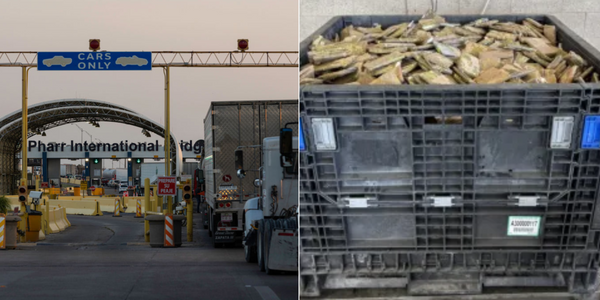PEOPLE living in Raploch and Bannockburn are being offered free fruit and nut trees to plant in their gardens as part of TreeLink Stirling’s Crown Of Trees project, which aims to connect pockets of trees in and around the city, creating a 36-kilometre circular walking route through woodlands and the battle sites at Bannockburn and Stirling Bridge.
Cities across Scotland are working to increase urban tree numbers. The goal is to have tree canopy cover of 20%, but many councils are still at the 17% level, with significant work still to do.
We need urban trees for many reasons. Having a tree in the garden increases the number of beasties living there, which leads to more birds in the area. Wild birds improve biodiversity by spreading seeds as they go about their day, leading to unexpected and delightful bursts of wildflowers.
It is a quiet joy to see a bright red poppy, fragile yet determined, in a city verge.
Not only is looking out at trees good for our mental health, but they are also important in supporting biodiversity and are crucial for our local environment. When the sun shines hard and the heat soars, their shade keeps pavements and buildings several degrees cooler while their root systems help to control water retention – crucial for keeping drought at bay in dry years and vital for mitigating flooding as climate change sees heavier deluges of rain.

The Woodland Trust Tree Equity Score is a new interactive tool mapping urban trees across the country. It shows that higher-income neighbourhoods have more than double the tree cover than less affluent areas. Those leafy spaces have nearly 20% less of the toxic pollutant nitrogen dioxide than is found in more built-up or tree-depleted communities. Tree Equity would see everyone enjoy the positive effects of having trees.
In 2021, the Nature-Based Solutions Institute (NBSI) launched “the 3-30-300 rule for greener, healthier, and more resilient cities”.
There are three elements of the rule – at least three trees should be in sight from every home, school, or workplace; there should be no less than 30% tree canopy in every neighbourhood, and there should never be more than 300 metres to the nearest public green space.
The concept, designed by Dr Cecil Konijnendijk, co-director of the NBSI, is gaining ground with governments across the world as they work to tackle the impact of the soaring heat and rampant floods now alarmingly prevalent because of the climate emergency.
Max Hislop is the vice chair of TreeLink Stirling. Hislop moved to the area after several years working with the Clyde Climate Forest, an ambitious project which aims to plant 18 million trees across the Glasgow City Region by 2032.
“What is staggering is that when you look at almost any urban area, the largest group of green spaces are private gardens.
“There’s a lot of focus on street trees and planting trees in parks and other civic spaces, and that’s right, but actually, if you just look at the amount of private green space there is, it makes sense to be focusing in on private gardens,” Hislop explains.
“Raploch has a lot of gardens. There’s a great opportunity to work with homeowners and residents. There’s a lot of sense in that because if they look after their own trees, it doesn’t draw on the council, which is so stretched, to look after them.”
People who live in the project areas can get a free apple, pear, plum, walnut or hazelnut tree to plant. The idea to hand out fruit and nut trees grew out of the successful Free Trees for Babies initiative, which has seen TreeLink Stirling giving Scottish heritage “James Grieve” apple trees free to people wanting to plant a tree to celebrate the birth of a baby.
“People want to see the tree grow as their child grows. I hope with our free nut and fruit tree scheme that people will have similar connections with the tree,” Hislop says.
“We provide them with advice about what the tree requires, and we provide them with a mulch mat which we will help them install. That is crucial. These mulch mats suppress the weeds, but they also lock in the moisture and so that’s part of our pack that we will be giving to people as well as written advice about how to look after the tree and, of course, they can keep in touch with us.
Hislop pauses, adding, “We want to build a relationship with people in Raploch. We want the trees that we are planting there just to be the start of our work with the people there. We want to see many more trees not only in people’s gardens but in other parts of Raploch and Bannockburn as well.”
DES Hackett is the urban forestry manager for Future Woodlands Scotland. His mission is to help “green the grey” of our towns and cities. A new Urban Forestry Fund opens for applications this September, providing monies for projects over the next 10 years.
“We will be able to target funding where it’s really needed. In those neighbourhoods where there is low canopy cover, we’re really putting trees where they are needed most. A massive challenge will be retrofitting neighbourhoods where we have lots of grey streets. How do we green that grey? It will be expensive.”
Hackett explains the need for long-term planning and support for these urban street trees, and the importance of local community involvement.
“If we do manage to put this kind of infrastructure in, it has to be looked after, maintained, otherwise it’s not going to survive. You get terrible stats of sometimes up to 50% mortality rate amongst trees being put in urban environments. It’s a challenging environment for a tree, so they need help. They need to be looked after.
“We’re very keen for ordinary people to get involved, to work with their neighbours to help in looking after the trees too, to get involved in watering them, and in keeping an eye on them.”
In the spring comes the blossom which feeds the pollinating bugs and bees. Then comes the fruit or the nuts. All around are the birds. Along with it, all we get green spaces.
Cleaner air. A better local environment, and a better world. It all starts with planting a tree.
Ruth Watson is the founder of the Keep Scotland the Brand campaign







